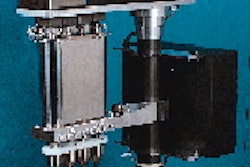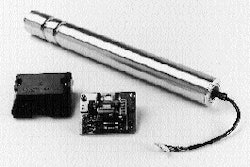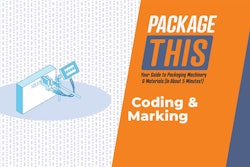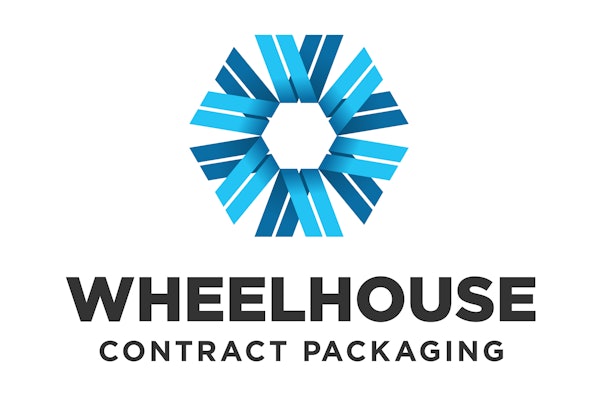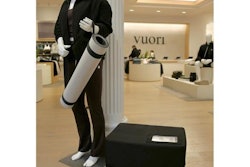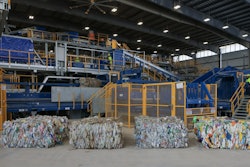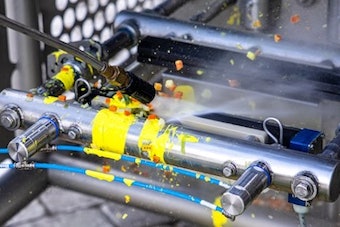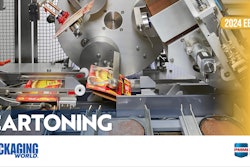A random-length shrink wrapper is significantly increasing throughput while cutting material costs for Menomonee Falls, WI-based Design House. A manufacturer of plastic house shutters sold via retail and mail order channels, Design House had been manually shrink wrapping shutters with L-bar sealers. Seeking to automate its shrink wrapping, Design House added a fully automatic machine from Conflex (Milwaukee, WI) in July '96. A chief benefit, says plant manager Jim Garrity, is greater output. Although he won't specify packaging speed, he says it has improved by at least 35%. The machine also freed up two operators, which provides considerable labor savings. Finally, the machine enabled Design House to switch from centerfolded to flat film, reducing film costs by 20%. Supplied by Cryovac (Duncan, SC), the thickness and composition of the 75-ga polyolefin-based shrink film remained the same. Based on all of these factors, Garrity says the new shrink wrapping line will pay for itself in less than a year. Critical to production is the machine's ability to accept any size package that Design House produces, without any changeover. "The only downtime is when you run out of film," reports Garrity. "before, it was a cumbersome process to feed the centerfolded film on the old machines," he adds. Threading a new roll on the new wrapper takes less than five minutes, he says. Design House packages thermoformed and injection-molded plastic shutters in lengths ranging from 23" to 81". Although Conflex considers the random-size feature limited to package length, Design House also needed the ability to accommodate both of its two 14" and 15" widths, again without the need for changeover. Conflex engineered an oversized forming plow that handles the 1" width variation. Entirely automatic Typically, a single size of shutter is packaged at any given time, though occasionally a few different lengths will be packaged at one time. During Packaging World's visit, the line was running shutters in 51", 55" and 59" lengths. At the start of the packaging line, an operator manually places one shutter in a corrugated tray, positioning the tray face-up on the urethane-belted infeed conveyor that's part of the shrink wrapper. From there, the entire wrapping process is automatic. Once in the infeed, the package advances towards the stationary film plow, which guides the film across the front of the package and around the tray's sides and bottom. The edges of the film overlap in the back at the center of the package to form about a 1"-wide seal. According to Conflex, its conventional machines impart a static charge to the film to cause the overlapping edges to hold together long enough to reach the shrink tunnel, where they bond under heat. This type of static bond is strong enough for smaller packages. But the large size of Design House's shutters translates into a lot of shrink force that tugs at the seal in the shrink tunnel. Such a static seal also couldn't withstand the small parcel shipping environment. For these shipments, the shrink film is the sole outer packaging. As a result, a stronger seal was required, since "a good portion of our business goes UPS right to the home," says Garrity. The solution was a combination static and heat seal. Static still holds together the overlapping edges, but the package then passes over a fixed heat sealing head prior to leaving the shrink wrapper. This creates a heat seal down the center of the package as the shutter is conveyed through the machine. One benefit to this so-called thermal/static seal is that there is no exposed flap on the seal, notes Garrity, resulting in a package with a nearly transparent seal, a characteristic that retailers appreciate. The smooth seal also means the seal can't become caught on something and tear. After the edges of the film have been sealed, the package passes through the sealing/cutting station. Photoeyes just prior to the seal bar look for the end of the corrugated tray. Until it is detected, the package passes through the sealing/cutting station. Once the sensors detect the end of one shutter, the seal bar is activated. Driven by a servo motor, the seal bar pivots downward to seal and cut the film, forming the end of the previous package and the start of the next package. Finished packages then exit the machine and pass through a new heat tunnel built for Conflex by Belco (Monrovia, CA). Packs are then bar-code labeled, strapped into bundles of two and manually palletized. No tweaking required Although Garrity says there are several manufacturers of random-length shrink wrapping equipment, Design House chose Conflex because it seemed that "with other companies, there was a lot of tweaking involved to get a random length machine." It also helps that Conflex's manufacturing plant is only 20 minutes away, providing speedy service when the need arises, says Garrity. And finally, if it seems like the machine is uncomplicated, that's because it is. "That's what's attractive about it," says Garrity.


